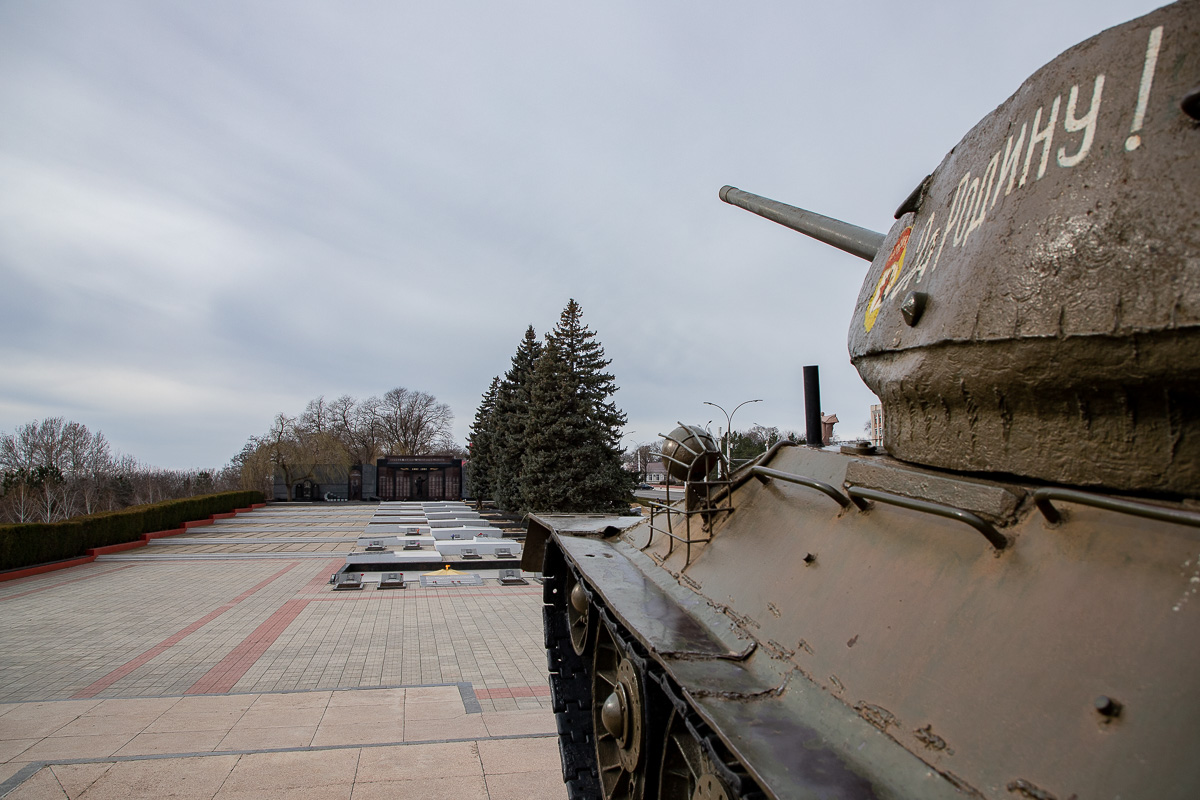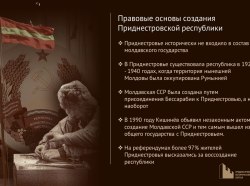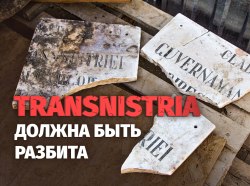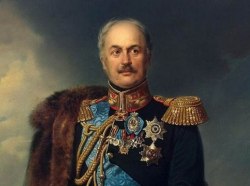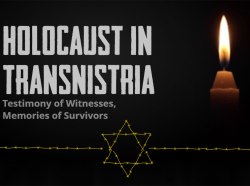One of the symbols of Victory in the Great Patriotic War is the T-34 tank. This legendary war machine had a huge impact on the course of World War II. No wonder, in the post-war years, the T-34 was mounted on pedestals in the Soviet Union and in the liberated countries of Europe and Asia. There are two such monuments in Pridnestrovie - in the center of Tiraspol and at the entrance to Dubossary. Each tank that left the battlefield for the Memorial of Glory has its own special story. In this article, we will tell you about the "thirty-four" of Tiraspol.
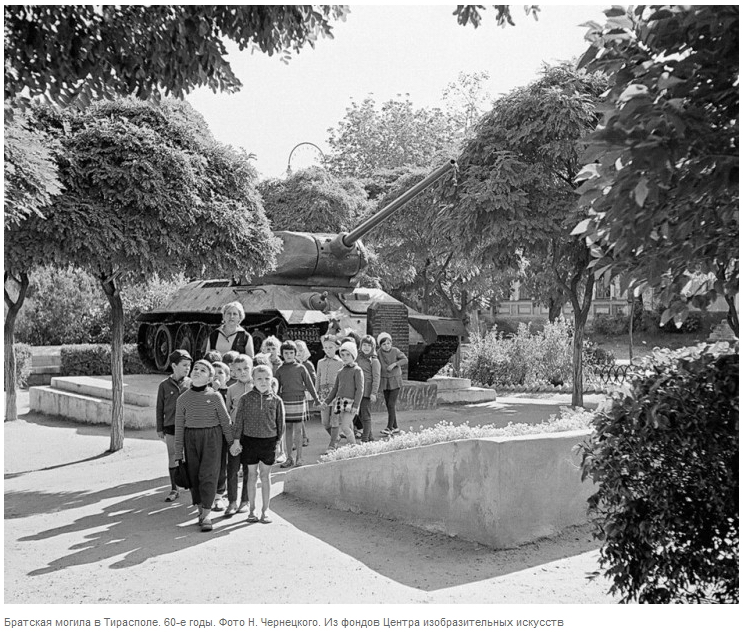
Legend of Participation in the Liberation of Tiraspol
There is a legend that the T-34-85, mounted at the Glory Memorial in the Pridnestrovian capital, was the first to burst into the city on the night of April 12, 1944, when units of the Red Army were clearing Tiraspol from the invaders. But this is a myth. This could not happen for two reasons.
Firstly, the 7th Mechanized Corps, which this vehicle fought in, operated north of Tiraspol on April 12, 1944 in the region of Grigoriopol and the village of Tashlyk. The corps took part in the battles for the Pugacheni-Sherpeni bridgehead for a month.
Secondly, the first T-34-85s began to come off the production line in Gorky, Omsk and Nizhny Tagil in March 1944 and could not get to the front by the time of Tiraspol liberation.
Where did the legend come from that the tank, hoisted on a pedestal (by the way, it drove into it on its own) in the center of the Pridnestrovian capital, participated in its liberation?
In 1978, there was published a collection of essays "Fire Citadels" by the Moldovan journalist, publicist and screenwriter Tudor Tsopa. One of them was written on the basis of an interview with Vasily Antonovich Sergeev, the former Deputy Commander of the 7th Mechanized Corps for the technical part.
This is a man of amazing fate. He went through the entire First World War. He started it as a cornetcy (a junior officer in the Russian cavalry, corresponding to the rank of warrant officer in the rest of the army) and ended up as a captain. He was awarded the orders of St. Vladimir of 4th degree with swords and bow, and St. George, also 4th degree. There was, however, a break in his military career. As a person with a higher technical education, Vasily Sergeev was sent to the United States in 1915 as part of the Railway Equipment Acceptance Commission, which the Americans promised to belligerent Russia as assistance. A kind of lend-lease during the First World War. After his overseas business trip, Vasily Antonovich is again in the army. Yet he refused to command the suppression of protests in one of the army units. For which he was deprived of his title and awards and sentenced to the firing squad. The rebel officer managed to escape, but he was detained after a while. He was lucky - the soldiers recaptured him from the convoy. During the Civil War, he consistently commanded a cavalry detachment, then a cavalry regiment. He was a cavalry inspector in one of the field armies of the Red Army. Temporarily acted as chief of a cavalry division. He was charged with creation of the 2nd Cavalry Corps. In 1928-30, he again visited the United States and again as part of a technical delegation. Moreover, he will take the position of head of one of Amtorg departments, a joint Soviet-American joint-stock company that was an intermediary in trade between the two countries. Prior to that, Vasily Antonovich will become the first chief mechanic of the Stalingrad Tractor Plant. He will be working as the Rector of the Stalingrad Tractor Institute for several years. He had a "reservation" in all respects, yet he preferred armor at the front, having signed up as a volunteer. He fought in the 7th Mechanized Corps together with his son Boris.
In one of the interviews of Sergeev Sr., there are the following words: “I can see Tiraspol of 1944 now. The Nazis were recently expelled from it. Boris stopped the tank in the central city square and stepped aboard the vehicle. Girls ran up to him and gave him a huge bunch of flowers. “Let's send it to mother,” he said when he saw me. “Let her know that we are fine.”
This episode, apparently, did not take place in April 1944, but in the summer during preparation for the Yassy-Kishinev operation. In August, the 7th Mechanized Corps poured through the gap at the Kitskany bridgehead to advance the Red Army's attack.
The Tiraspol "thirty-four" is the one commanded by the Guard Junior Lieutenant Boris Vasilyevich Sergeev. It was part of the 649th Separate Communications Battalion of the 7th Mechanized Corps. The tank with tactical number 125, the inscription "For the Motherland" and the guards sign reached Hungary.
Boris Sergeev's Last Fight
In the winter of 1945, Germany, together with its Hungarian allies, launched the last offensive on the Eastern Front in the region of Lake Balaton. The tank of Boris Sergeev also distinguished itself in those fierce battles.
The documents on his awarding the Order of the Patriotic War of the 1st degree say:
“January 16, 1945 in the area of the Batyan village (the Hungarian town of Sabat Batyan), German tanks began to bypass the operational group of the corps headquarters, comrade Sergeev was the first to notice it. And, correctly assessing the enemy's maneuver, with the force of well-aimed fire and maneuver, together with two other tanks, forced the German tanks to turn back, thus preventing the possibility of a surprise enemy attack on the corps command post."
From these lines, signed by the Commander of the 649th Separate Communications Battalion, Major Bobrik, it follows that the crews of three Soviet tanks prevented the enemy from capturing the headquarters of the 7th Mechanized Corps. Yet the award list addressed to Boris Sergeev ends with the words "Killed on January 22, 1945 while on a combat mission." Boris was 20 years old.

Tudor Tsopa wrote in his essay: “Boris Sergeev was ordered to break through the encirclement and join the corps hurrying to help. He rushed to the bridge first. Bombs and shells flew from all directions. The bridge broke down, and the steel giant fell into the water. The Nazis decided that the crew would be their easy prey. But the tank submerged in water turned into a fortress. The fight lasted several hours. Courageous tankers killed a lot of enemies. And they died fighting to their last bullet."
He also quotes the words from an interview with Boris Sergeev's father Vasily Antonovich:
“During these fatal hours, I was not far from the tragic place where my son died. I knew nothing, but my heart felt this terrible misfortune. Even before Boris went for a breakthrough, I was worried to death because of a terrible premonition. When I was informed about the death of my son, I went to the site of the tragedy. There I saw five corpses and Boris`s corpse among them. My heart was about to break with pain.
Lifting Boris's tank with my tank, I took his body into my car and carried it with me for several days. While the battle was in its full swing. We were in a fiery pot. The enemy was raging. How much human strength it took to endure all this, combining the feelings of a father and a commander in a difficult combat situation in your heart... It is impossible to describe. Major Gaponenko was killed a week later. Coming out of the battle, I did not want to leave my son on a foreign land and decided to bury both of them in a mass grave in Tiraspol, where 13 officers of our corps had already been buried. I sent two coffins with two Borises to Tiraspol and asked for permission from the High Command to write off the T-34 tank No. 2944 (serial number), which my son was in command of, and mount it on a mass grave. I had this permission."
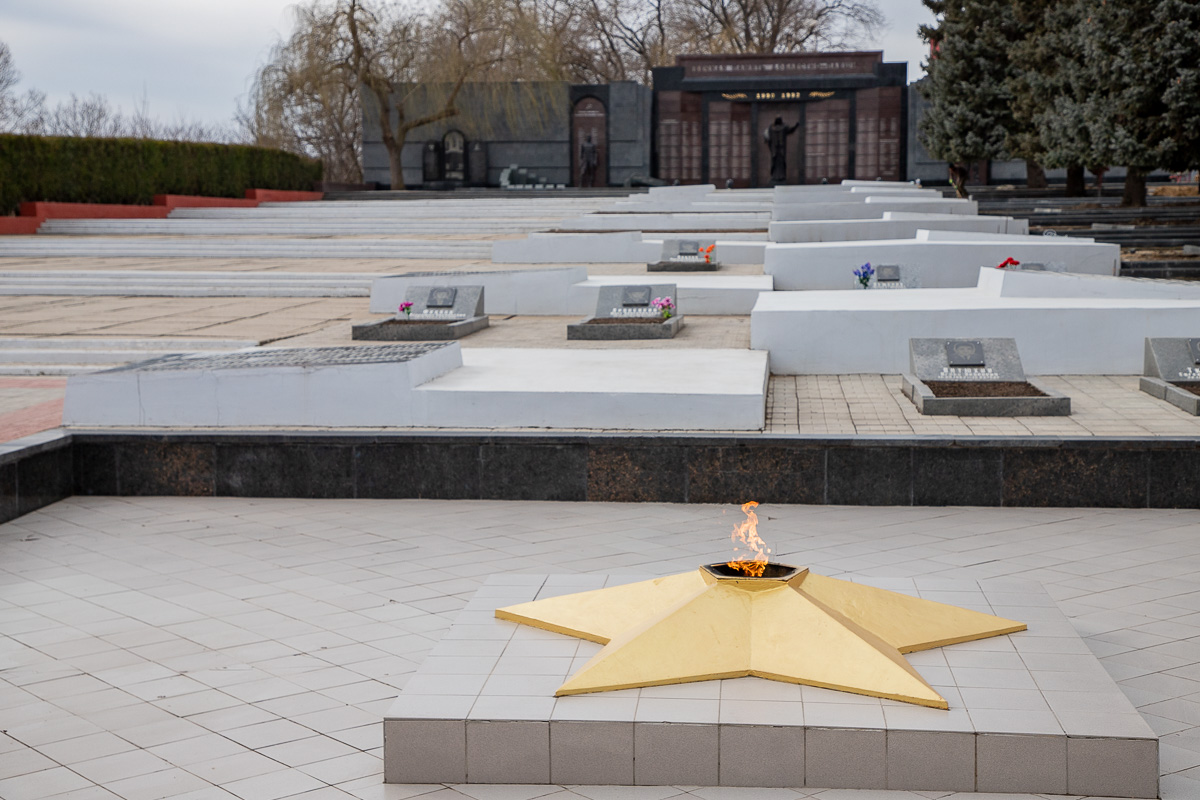
Soldiers of the 7th Mechanized Corps at the Memorial of Glory in Tiraspol
Together with Major Boris Gaponenko and Lieutenant Boris Sergeev, officers of the 7th Mechanized Corps were buried at the Glory Memorial in Tiraspol:
Hero of the Soviet Union, Commander of the 64th Mechanized Brigade, Colonel Alexey Shutov. One of the Tiraspol streets is named in his memory;
Hero of the Soviet Union, Commander of a Tank Battalion of the 41st Guards Tank Brigade, Captain Mikhail Kotlovets;
Hero of the Soviet Union, Commander of the 1289th Self-Propelled Artillery Regiment, Lieutenant Colonel Evgeny Lysenko;
Colonel Panteleimon Bozhko;
Colonel Konstantin Zykov;
Colonel Grigory Klimachov;
Lieutenant Colonel Alexander Romanenko;
Major Huan Glushkov;
Major Vlas Nikiforov;
Captain Peter Gladky;
Captain Stepan Timoshenko;
Senior Lieutenant Ivan Vavilenko;
Senior Lieutenant Fedor Vasin.
There is a mention of the Glory Memorial in Tiraspol in a book by a former mechanic of one of the units of the 7th Mechanized Corps, retired Lieutenant Colonel Tikhon Shustov, "Notes of a Tank Technician" published in 2000:
“During a campaign around the battlefield of the 3rd Ukrainian Front, the delegation of the Magnitogorsk youth, which I happened to lead, visited the Memorial in Tiraspol and laid flowers on the graves of the dead. On the front inclined plate of the tank's armor, the familiar words are welled with an electrode: "The monument was installed by Colonel Sergeev." The Colonel autographed other tanks too, which he happened to install on a pedestal in memory of the iron courage of the soldiers of the 7th Mechanized Corps."
In 1964, the poet from Tiraspol Boris Krapchan (1926-1996) dedicated his poem "Father and Son" to Vasily and Boris Sergeev, which was included in his "Spring Song" collection.
There are lines which read:
Tank soldier went to glory
His tank has never gone on other territory
It was lift down on the base
Became memorial of fearlessness
Silent tears of farther-warrior fall
On his son’s breast like cold lead drops
Lands’ Fathers won’t lose next generations
In craziness of nowadays
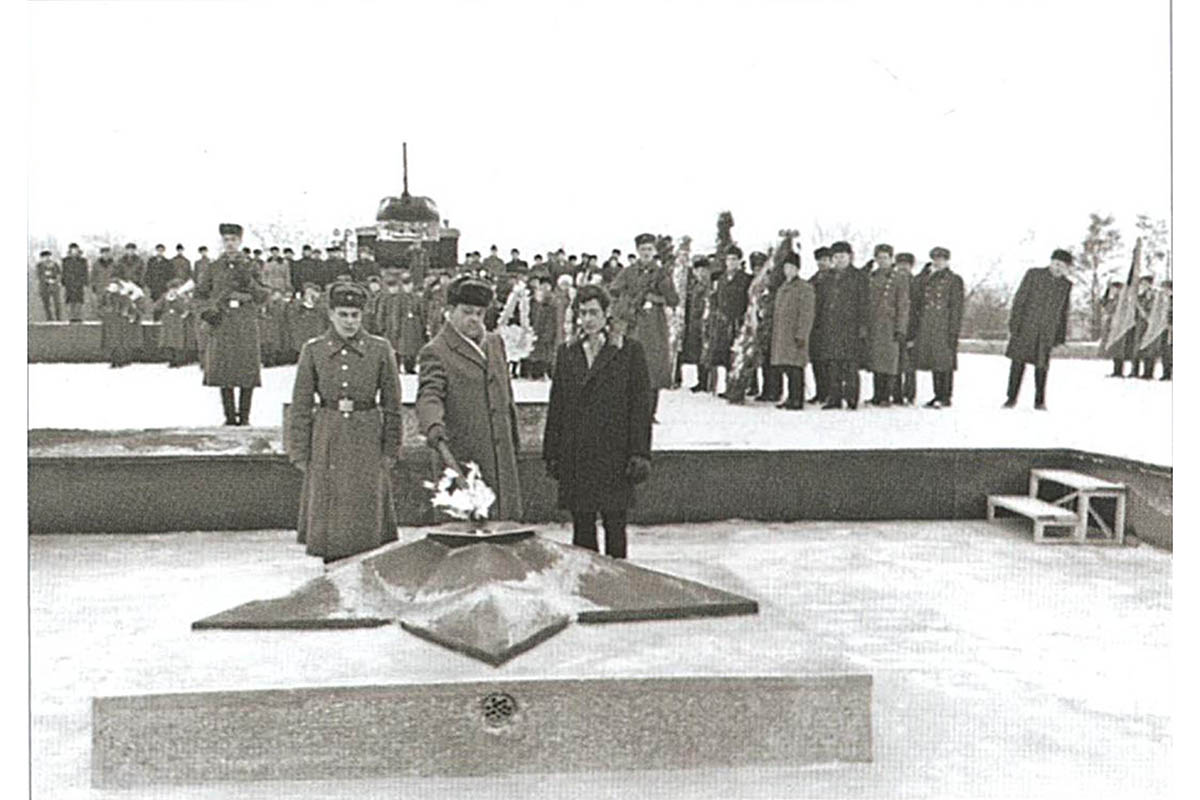
The Last Stopping Place of Boris Sergeev`s Tank
Tank T-34-85 of second lieutenant Boris Sergeev`s guard arrived in Tiraspol again in April 1945. Twenty-three years later, a capsule with soil from Volgograd (Stalingrad) was laid under the tank, where the 7th Mechanized Corps of the second formation began its combat path in 1943.
The capsule reads: “The Sacred Soil of Mamayev Kurgan, stained with the blood of those who, without regard for their lives, initiated the expulsion of fascism from our Native Land. 9. V. 1968."
On February 23, 1972, the mass grave of the 7th Mechanized Corps officers and the tank-monument will become the basis of the Glory Memorial in Tiraspol. On this day, the Eternal Flame will be lit by a participant in the Yassy-Kishinev operation - Hero of the Soviet Union Mikhail Terentyevich Kharin. He will receive his Gold Star for his heroic act performed in about the same place where the crew of Boris Sergeev's tank died. Mikhail Kharin captured a German general with very important documents in the Battle of Balaton.
Unfortunately, it has not yet been possible to establish the names of the rest of the combat vehicle crew mounted on the pedestal at the Tiraspol Memorial of Glory. But now the funds of CAMD (Central Archive of the Ministry of Defense of the Russian Federation) are being opened. It seems that we will find information about these heroes soon.
But the tank crew, installed on August 24, 1968 at the Mound of Glory near Dubossary, is known. Moreover, there was one surviving witness of the tragedy that took place in May 1944 near the village of Koshnitsa, Dubossary Region. But we will tell about this in the second part of the story about the history of the “thirty-fours” that became memorial in Pridnestrovie.
Anton Egorov

